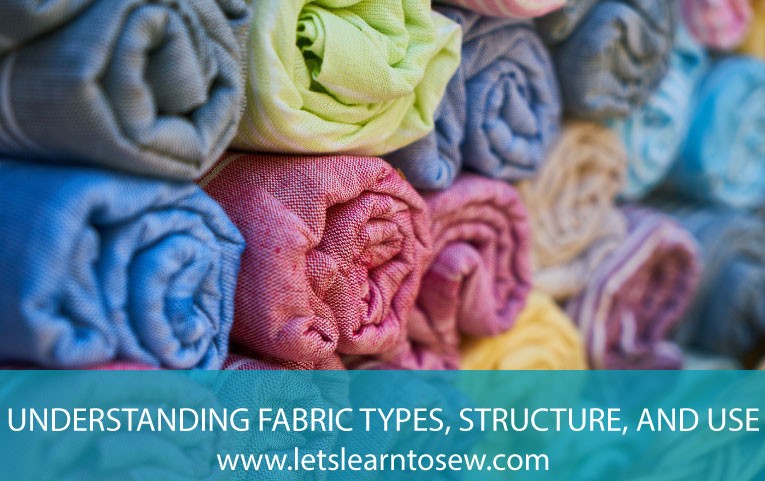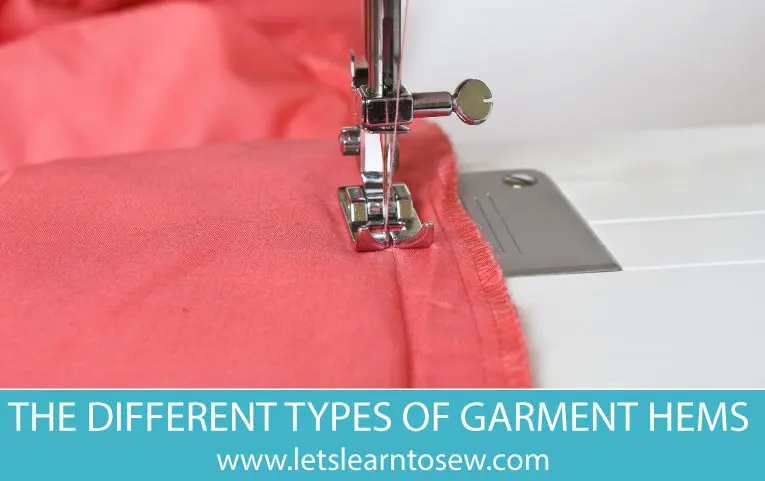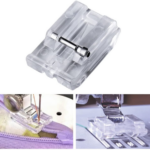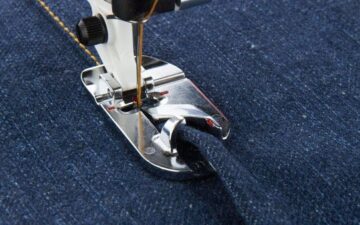Elastic for Sewing
Elastic for sewing is a blend of stretch fibers like rubber or spandex and natural or man-made fibers such as cotton or polyester. There is a type or elastic for virtually every stretch project you can imagine. From waistbands to decorative shirring, elastic makes clothes easy to sew and care for, and comfortable to wear.
Types of Elastic for Sewing and Crafting
There are three basic types of elastic: waistband, specialty, and lingerie. They are sold either packaged in precut lengths or by the yard. There are common widths for each type, but they differ slightly by the manufacturer.
Wovens
PLUSH-BACK
• Sturdy & latex-free
• A decorative edge
• Soft backing for comfort next to the skin
FLAT NON-ROLL & RIBBED NON-ROLL
• Resists twisting & rolling
• For sleeves, waistbands & leg bands
• Flat for light- to medium weight fabric
• Ribbed for heavier fabrics
UNDERWEAR & PAJAMA
• Offers light stretch & soft texture
• Designed for comfortable waistbands
• Can stitch directly to the wrong side of the fabric
BUTTONHOLE
Buttonhole elastic is suitable for waistbands, sleeves, necklines, legbands, scrunching and more.
It is best suited for lightweight fabrics and doesn't narrow when stretched. It is also not affected by needle piercing making it as suitable for direct fabric application as it is for casings
• Soft on both sides
• Stretchable buttonholes evenly spaced down the center
• For adjustable waistbands on the inside of maternity & children’s clothing
WAISTBAND
• Combines comfort & color
• For waistbands or belts
• Vibrant colors & wider available
Knits
STRETCH LACE
• Soft, flexible & conforms to the body
• Great for lingerie & baby headbands
KNIT
• Soft & resists curling
• Will not narrow when stretched
KNIT NON-ROLL
• Contains a monofilament
• Resists rolling & twisting
Braids
BRAIDED
• Most basic elastic, easily recognized by horizontal ribs
• Lightweight & thinner than woven
• Narrows when stretched
SOFT STRETCH
• Lightweight with a soft stretch
• For use on baby & doll clothing
BALLET
• Specially colored to blend with ballet clothing & shoes
• Create or repair a straight or “X” shaped band on ballet shoes & slippers
Cords
BEADING CORD
• Designed for stringing beads
• For clothing where a light amount of stretch is required
OVAL & ROUND CORD
• For making buttonhole loops on wedding dresses
• For creating gathers on baby & doll clothing
Specialty
THREAD
• Very thin
• For creating gathering, shirring & smocking on lightweight fabrics
• Use in bobbins & sew multiple rows to achieve the desired effect
CLEAR
• Thin & soft
• Stretches 3 to 4 time its length
• Sew through without destroying the elasticity
• Gathers & stabilizes knit seams
Colors, Patterns & Texture
RUCHED
• Delicate gathers for extra charm
• For straps, trims & crafts
• Use for bracelets, hair ties & bows
FOLD-OVER
• Features a center indentation to encase the edge of a seam
• For ponytail holders, headbands, bookmarks & bracelets
• Can be used in place of standard shoelaces
RUFFLE
• Add personality to garments & accessories
• For bows, trims, headbands & bracelets
• Stitch on to embellish tank tops, socks or pajama pants
GLITTER
• Add sparkle to craft & sewing projects
• Use on bracelets, bows & headbands
• Create accessories for gymnastics, dance, holidays & special occasions
Sew Vs Nonsew
The main differences between the types of elastics listed are that some can be sewn through and some cannot. Some should only be threaded through a casing, as stitching through them breaks the inner bands of rubber, stretching the elastic out of shape and destroying its ability to spring back to its original, unstretched length. Sew-through elastics and be sewn or serged directly to your fabric without damaging their stretch recovery.
Do you have a favorite type of elastic to work with?











Love, Sawyer
Thank you so much for this! I bought a sewing maching a few years ago with plans of making pants I saw on Pinterest. Anyway, I obviously needed elastic for the waist band but had no idea what I was doing so I just went to Walmart and bought the cheapest elastic I could find. It didn't go very well... The pants ended up becoming a handbag and I haven't attempted clothing since. Now that I know where I went wrong, maybe it's time to give the pants another shot.
Urmila
Great post even more useful ...specially difference between sew and nonsew...,
Thanks
rhapsodyville
SEW much great information.